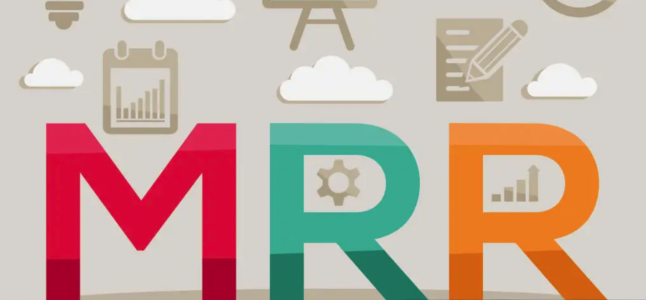Building Recurring Revenue Streams in a Bootstrapped Startup

Recurring revenue isn’t just a buzzword—it’s the backbone of sustainable business growth. For bootstrapped startups, it’s a game-changer. Predictable income allows you to reinvest in growth, minimize cash flow issues, and scale steadily without relying on external funding.
But how do you actually create recurring revenue streams? Let’s dive into actionable strategies, specific examples, and step-by-step guidance on implementing them.
Why Recurring Revenue Matters for Bootstrapped Startups
- Financial Stability: Predictable income reduces financial stress and makes planning easier.
- Scalability: Stable revenue lets you focus on growth instead of constant selling.
- Improved Valuation: Businesses with predictable revenue are more attractive to investors and buyers, even if you’re bootstrapped.
Actionable Strategies to Build Recurring Revenue Streams
Here are the most common types of recurring revenue, with specific examples and implementation steps to make them work for your business.
1. Subscription Models: Sell Access
A subscription model charges customers on a recurring basis for access to your product or service.
Examples
- SaaS Business: A task management tool like Todoist Pro charges $4/month for premium features like reminders and integrations.
- Membership Sites: A fitness instructor offers $30/month for exclusive workout videos and live classes.
How to Implement
- Define the Value Proposition: Identify what customers would pay to access regularly. For example, SaaS businesses can offer premium features, while content creators can provide exclusive materials.
- Choose the Right Platform: Use tools like Stripe, Memberstack, or Gumroad for subscription management.
- Create Tiers: Offer multiple subscription levels to cater to different audiences (e.g., basic, pro, and enterprise).
Step-by-Step Plan
- Build your product/service with recurring value (e.g., monthly updates or exclusive content).
- Set up a payment gateway to handle automated billing.
- Launch with a promotional discount to attract early subscribers.
2. Usage-Based Models: Charge Per Use
In a usage-based model, customers pay for what they use rather than a fixed fee.
Examples
- Cloud Storage Services: AWS charges customers based on the storage space or processing power they use.
- Pay-Per-Click Advertising: Google Ads charges businesses based on clicks or impressions.
How to Implement
- Set Up Usage Metrics: Decide what to charge for. For example, track gigabytes used for storage services or hours consumed for consulting services.
- Use Billing Software: Platforms like Chargebee or Stripe Metered Billing can handle usage-based invoicing.
- Educate Your Customers: Ensure customers understand how usage affects their bills through dashboards or usage alerts.
Step-by-Step Plan
- Identify a scalable resource (e.g., bandwidth, API calls) that can be measured.
- Build a tracking mechanism to monitor usage.
- Set tiered rates to encourage higher usage without overwhelming costs for small users.
3. Service Retainers: Build Long-Term Relationships
Offer a fixed-price retainer for ongoing services.
Examples
- Marketing Agencies: Charge clients $2,000/month for continuous SEO management.
- IT Services: Provide monthly maintenance and support for small businesses.
How to Implement
- Define Deliverables: Specify what’s included in the retainer (e.g., 10 blog posts, 24/7 support).
- Create Packages: Offer options like bronze, silver, and gold tiers to accommodate different budgets.
- Focus on Outcomes: Clients are more likely to stick around if you’re delivering measurable results.
Step-by-Step Plan
- Approach your current clients and propose moving to a retainer model.
- Offer incentives like priority support or discounted rates for signing a long-term contract.
- Use contracts to clarify expectations and minimize scope creep.
4. Licensing and Royalties: Monetize Intellectual Property
Earn recurring revenue by licensing your software, technology, or creative assets.
Examples
- Software Licensing: A company sells a B2B tool for $500/year per user.
- Content Licensing: A photographer licenses stock images to websites for $100/month.
How to Implement
- Protect Your IP: Ensure your intellectual property is legally protected through copyrights or patents.
- Set Licensing Terms: Define usage rights, fees, and renewal terms.
- Find Distribution Platforms: Use sites like Envato, Getty Images, or Re-license to find customers.
Step-by-Step Plan
- Develop high-quality intellectual property (e.g., software or design templates).
- Advertise your licensing terms on your website or partner with distribution channels.
- Offer tiered pricing for single-use, multi-use, or unlimited licenses.
5. Consumables and Replenishment: Deliver Convenience
Sell recurring products that customers regularly need.
Examples
- Subscription Boxes: Dollar Shave Club sends razors monthly for $10.
- Food Deliveries: A coffee brand offers recurring shipments of beans.
How to Implement
- Identify Consumables: Choose products that customers repeatedly buy, such as skincare or supplements.
- Set Up Auto-Ship Options: Allow customers to choose delivery frequency (e.g., every 30, 60, or 90 days).
- Offer Incentives: Discounts or free shipping encourage subscriptions.
Step-by-Step Plan
- Use e-commerce platforms like Shopify or ReCharge for subscription billing.
- Start with your most popular product and bundle it with perks for subscribers.
- Promote through email campaigns highlighting the convenience and savings.
Tips to Maximize Recurring Revenue
- Prioritize Customer Retention:
Offer loyalty discounts, proactive customer support, and frequent updates to ensure customers stick around. - Monitor Key Metrics:
Track churn rate, lifetime value (LTV), and monthly recurring revenue (MRR). Tools like Baremetrics or ChartMogul can help. - Iterate Based on Feedback:
Regularly collect feedback through surveys or customer calls to refine your offering.
A Final Word on Building Recurring Revenue
Recurring revenue isn’t just a financial strategy—it’s a mindset. Focus on delivering ongoing value to your customers, and the revenue will follow. Whether you’re implementing subscriptions, retainers, or usage-based pricing, start small, test your assumptions, and iterate.
The key is persistence. Success in building recurring revenue doesn’t happen overnight, but with consistent effort, it can be the foundation of a thriving, bootstrapped startup.


